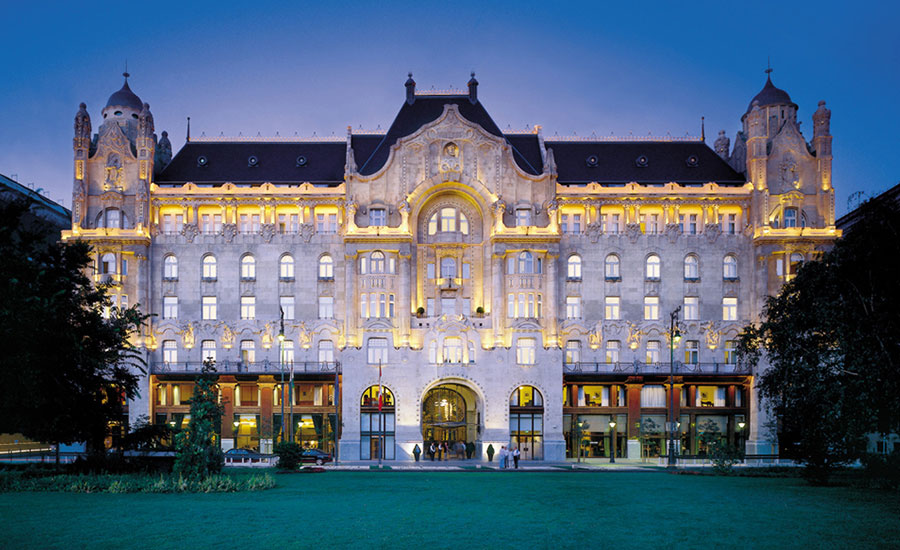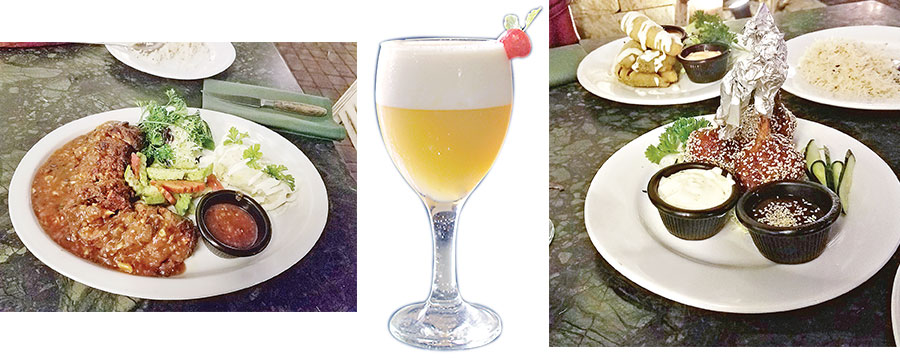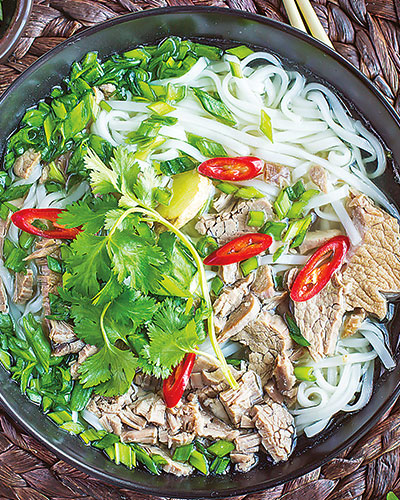Laugarvatn Fontana, Iceland
- 06 Apr - 12 Apr, 2024

If service and style is a hallmark of a great hotel then Gresham Palace can be said to deliver. This magnificent building, originally a meeting place for Budapest’s affluent and arty, oozes quality from every pore – whether you’re approaching its grand exterior from the city’s landmark bridge, entering the lobby with its stained glass and marble, or padding the thick carpets of the corridors. The façade of the art-nouveau Gresham Palace has arches and columns and stylised floral motifs picked out in turquoise and gold. Inside, the floor of the lobby is a mosaic of cream stone with a pattern of swirling tendrils in dark green, while its arching glass roof has stained glass panels. The hotel’s ideology reflects the aim to marry combinations of Hungarian and international cuisine. It has an interior inspired by the 1920s, an open charcoal rotisserie and much more relaxed environment than it had before being converted from fine dining. The Four Seasons sets the benchmark for luxury hotels in Budapest; The ‘wow’ factor begins the moment guests set foot in the hotel’s spectacular lobby, extends to its entertainment and recreation areas and continues right through to the wake-up call the following morn.

Located in the posh area of Clifton opposite Abdullah Shah Ghazi Shrine, Karachi, Ranoush Villa is a fine dining restaurant that offers an all-inclusive cuisine ranging from American steaks and burgers to Arabic specialities. It has a decent sitting area inside as well but its cosy dimly-lit space out in the open air is a much better alternative for cool nights, although there isn’t much stopping the wind from dropping unwanted ingredients on your food, nevertheless, the ambience outside is soothing. I noticed the manager there personally looking after the guests, which is always nice. He suggested that I try a couple of their best-sellers, especially the Playboy Grill. In the mood to try some Mexican food already, I ordered it along with Teriyaki Chicken, starting the meal with Chicken Lollipops, a recommended appetiser. A few semi-crusty, fried and saucy chicken lollipops, topped with white sesame seeds and served with a mayo dip and BBQ sauce were served. The chicken was well-cooked and tasted excellent with the thick glazing latter dip. Teriyaki Chicken is grilled boneless chicken topped with lots of teriyaki sauce. The diagonal cuts of chicken are served on a bed of sizzling vegetables, and with garlic rice and extra teriyaki sauce. This is one of the best teriyaki dishes you will have anywhere in Karachi; the chicken was absolutely juicy, the vegetables were cooked through yet crunchy and the sauce had an amazing sweet and spicy flavour to it. All the flavours were balanced and the dish was filling and spicy enough to be enjoyed. The majestic Playboy Grill is a juicy beef steak topped with caramalised onion, mushroom, mozzarella cheese and a more-than-generous amount of gravy that is spicy and has lots of chopped garlic in it. Being a slow eater, I found that the beef had become a tad bit hard to cut through and chewy. The steak is also packed with spicy flavours, which is signature in Mexican cuisine. So if you are not a fast eater or can’t handle spicy food, you might want to stay away from it. This main course is accompanied with mashed potatoes and stir-fried vegetables. Their cocktail, Zombie is a sweet punch packed with the tropical flavours of guava, pineapple and orange juices, flavoured syrup and crushed ice. Unlike its name, the drink looked refreshing and tasted even better, making it the perfect companion for hot and spicy Mexican food. – SSK

Pho is a Vietnamese noodle soup consisting of broth, rice noodles called bánh ph•, a few herbs, and meat, primarily made with either beef (ph• bò) or chicken (ph• gà). It is a popular street food in Vietnam and the specialty of a number of restaurant chains around the world. Pho originated in the early 20th century in northern Vietnam and was popularised throughout the rest of the world by refugees after the Vietnam War. Because pho's origins are poorly documented, there is significant disagreement over the cultural influences that led to its development in Vietnam, as well as the etymology of the word itself. The word “pho” reputedly comes from the French term “pot au feu”, which means French soup. The dish is said to be influenced by Chinese and French cooking – initially rice noodles and spices were imported from China and red meat was popular in France. After Vietnam was divided in 1954, the popularity of pho spread from North to South Vietnam, but the styles diverged. The northern version was simple, using fewer ingredients and cuts of meat. The southern version was more complex, with as many as a dozen ingredients. One small cup serving of pho provides 111 calories; 2g fat, 5g of protein, 18g of carbohydrates, 28mg of cholestrol, 193mg of sodium and 153mg of potassium.
COMMENTS